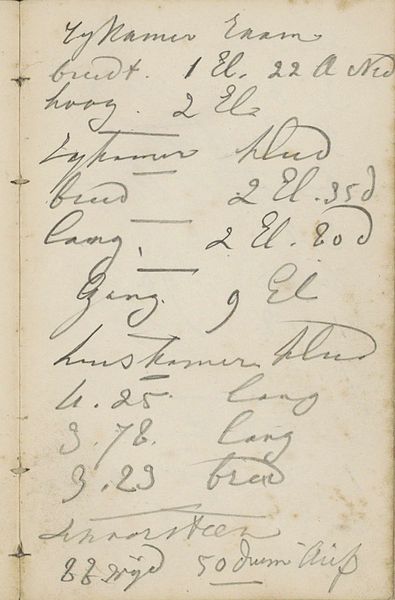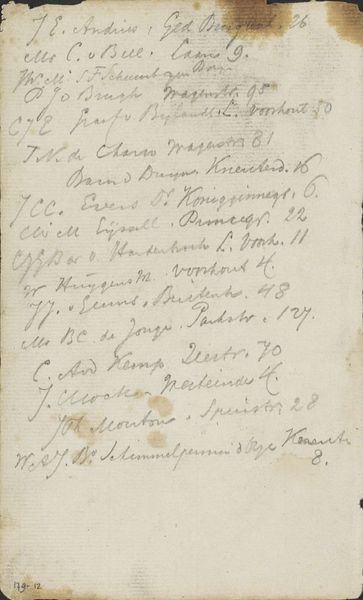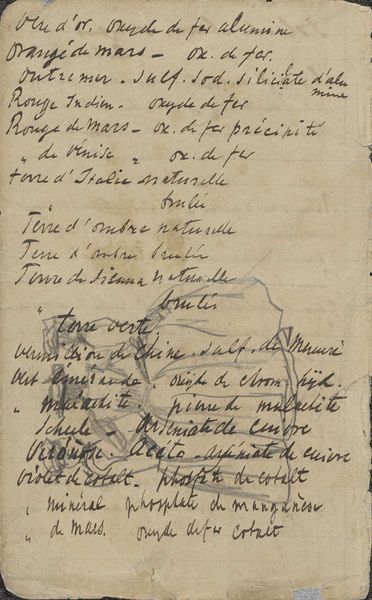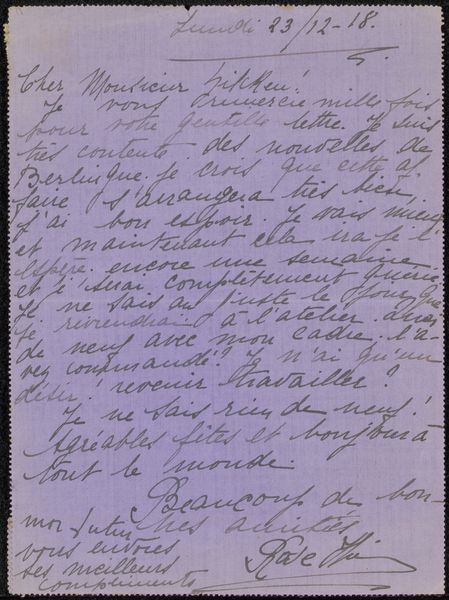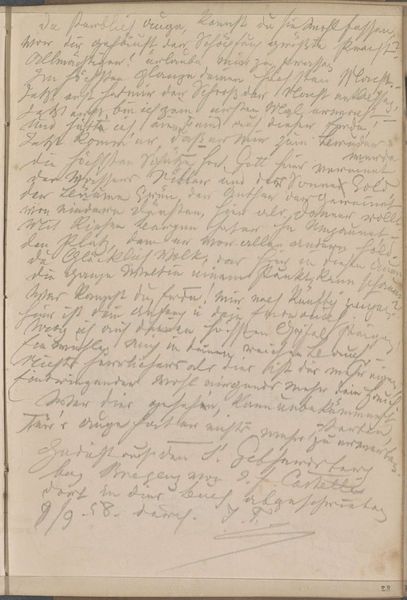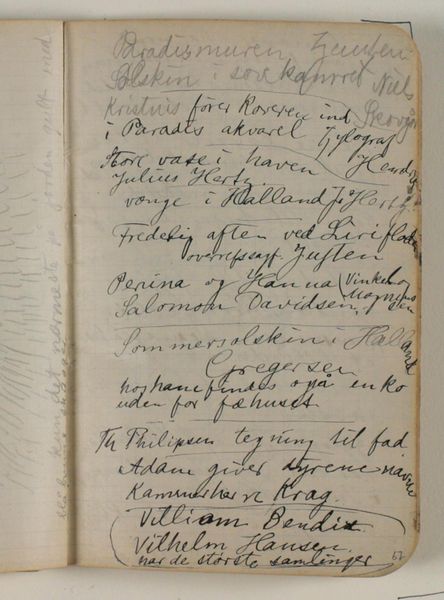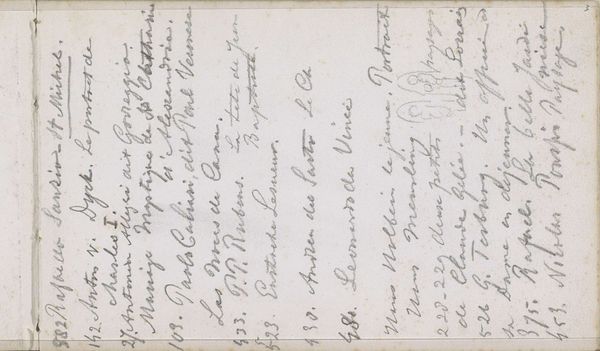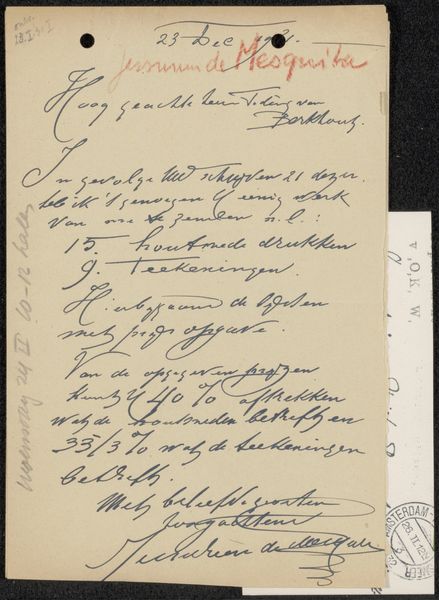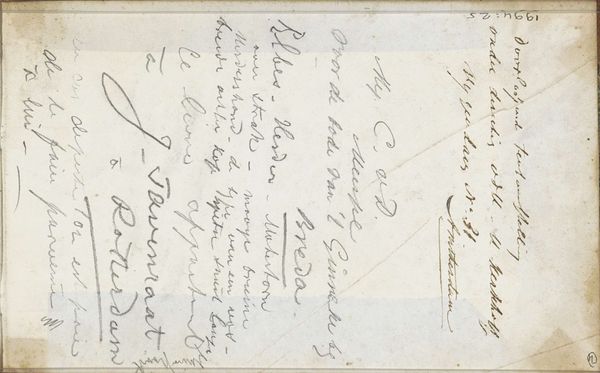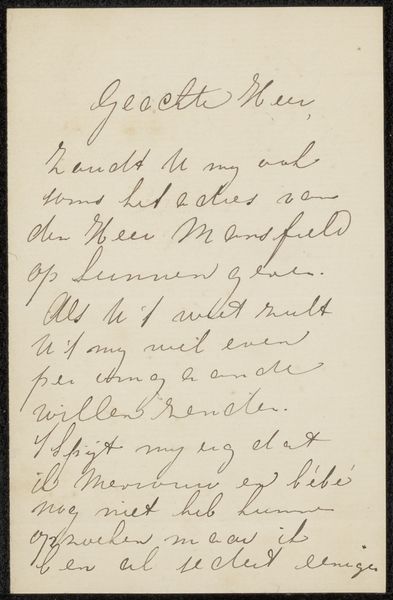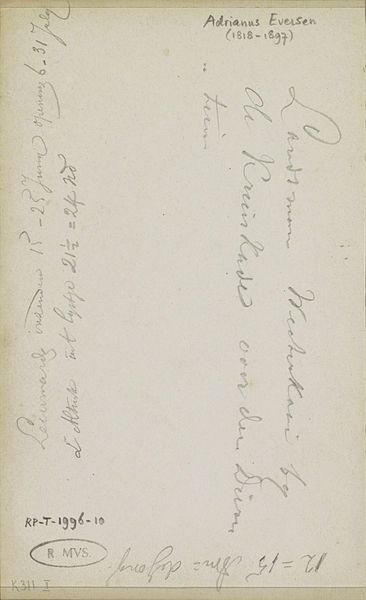
drawing, textile, paper, ink, pen
#
drawing
#
textile
#
paper
#
personal sketchbook
#
ink
#
pen work
#
sketchbook drawing
#
pen
#
sketchbook art
#
calligraphy
Copyright: Rijks Museum: Open Domain
Curator: This drawing, believed to have been created between 1849 and 1895, is titled "Instructie voor het solderen van ijzer," or "Instructions for soldering iron." It comes to us from Willem Koekkoek and resides here at the Rijksmuseum. It seems to be created with pen and ink on paper. Editor: My first impression is one of secrets, perhaps an alchemist’s notes jotted down hurriedly. The calligraphic script feels delicate and precise, yet the stains and smudges suggest a well-used, personal document. It has the feeling of some kind of treasure map! Curator: Precisely! It's a glimpse into a craftsman's practical knowledge, not just a detached set of instructions, it hints at the real-world conditions under which these techniques were used. The very act of writing these instructions transforms the knowledge into a tangible object, a proto-industrial resource. Editor: And what strikes me, visually, are the words themselves. Consider, for example, “Geest van Zout”, spirit of salt! Each element, beyond its chemical composition, is imbued with an ancient association, carrying symbolism far beyond practical instruction. Its linguistic symbols open onto something almost animistic, or sacred, despite its intended purpose. Curator: This tension between the mystical and the practical is what interests me most. Recipes and instruction manuals were valuable resources and carefully guarded secrets passed down from generation to generation or guild to guild, therefore its value transcended economics into realms of community building and knowledge economies. Editor: Absolutely, one senses a continuous link from the medieval guild halls and even alchemy. Though intended for instruction, each element described, salt or “zout,” spirit or “geest,” suggests not simply an act of instruction, but something more personal, more intimate, and far deeper rooted. Curator: Well put. This is much more than a simple recipe; it’s a connection to a world where craft was intimately intertwined with communal knowledge, and a critical ingredient in building the social fabric. Editor: And through this beautiful drawing we can glean echoes of an older order, transformed now into a cultural memory that continues to resonate.
Comments
No comments
Be the first to comment and join the conversation on the ultimate creative platform.
